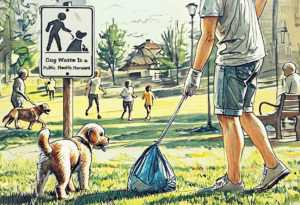By Leanna Lo

In the near future, a haunting reality grips the Sundarbans, where the mighty Ganges River meets the Bay of Bengal. Once a thriving region with verdant mangrove forests and bustling communities, it now faces an inexorable fate. The rising sea levels, driven by relentless climate change, are swallowing the land inch by inch, leaving behind only memories and despair.
Aarif, a young fisherman, wakes up to a scene of devastation. The house his family has lived in for generations is partially submerged, the familiar hum of life replaced by the eerie silence of encroaching waters. His daughter, Naira, clings to his side, her eyes wide with fear. “Baba, where will we go?”
Aarif has no answer. His heart aches for the home they are losing, but the urgency of survival propels him forward. They must leave, and they must leave now.
Gathering what little they can carry, Aarif’s family joins a mass of others, trudging through knee-deep water towards higher ground. The journey is fraught with challenges—lack of food, clean water, and shelter. Desperation hangs heavy in the air as they reach the makeshift camp on the outskirts of Dhaka, already teeming with climate refugees.
In the camp, Aarif meets Noor, a community organizer who tirelessly advocates for the displaced. Noor’s voice carries a message of hope and solidarity. “We need to unite, to demand recognition and rights. Our plight cannot be ignored.”
Noor explains that despite their desperate circumstances, they are not considered “refugees” under international law. The world watches, yet fails to act. Aarif’s heart hardens with resolve. “We must change this. For Naira, and for all our children.”
Days turn into weeks. Aarif and Noor rally the camp’s inhabitants, organizing peaceful protests and sending petitions to the government and international bodies. Their efforts catch the attention of a global audience. Stories of the Sundarbans’ exodus spread, igniting a spark of awareness and empathy worldwide.
The momentum builds. Nations begin to acknowledge their role in the climate crisis. Developed countries, long contributors to greenhouse gas emissions, start offering aid and asylum to climate migrants. Legal frameworks are reexamined, pushing for the inclusion of climate refugees.
In a historic session at the United Nations, a resolution is passed. Climate migrants are granted the same protections as any other refugees. The world commits to reducing emissions, investing in sustainable practices, and aiding those already affected by climate change.
Back in the Sundarbans, the water continues to rise, but there is now a glimmer of hope. Aarif, Noor, and the countless others who have fought tirelessly see the fruits of their labor. Naira’s future, once shrouded in uncertainty, now holds the promise of stability and safety.
As the sun sets over the camp, Aarif looks at his daughter, who is playing with other children, oblivious to the hardships they have faced. He whispers a silent vow to protect her, to fight for her right to a secure future. The journey is far from over, but they have taken the first crucial step.
The story of the Sundarbans’ exodus becomes a testament to the power of community-driven climate action. It underscores the urgent need for global solidarity and decisive action to combat the climate crisis. The world learns that when we stand together, driven by compassion and justice, we can turn the tide and build a sustainable future for all.
Sources
“A Study of Climate Change-Induced Migration in the Sundarbans Mangrove Region in the Last Ten Years.” Confluence: Journal of Interdisciplinary Studies, 13 June 2021, cjids.in/volume-v-2021/a-study-of-climate-change-induced-migration-in-the-sundarbans mangrove-region-in-the-last-ten-years/a-study-of-climate-change-induced-migration-in-t he-sundarbans-mangrove-region-in-the-last-ten-years/.
“Bangladesh: On the Front Line of Climate Change.” Environmental Justice Foundation, ejfoundation.org/what-we-do/on-the-front-line-of-climate-change. Accessed 14 June 2024.
“Convention and Protocol Relating to the Status of Refugees | UNHCR.” UNHCR, 2024, www.unhcr.org/media/convention-and-protocol-relating-status-refugees. Accessed 18 Apr. 2024.
“Sundarbans’ Climate Refugees Face an Uncertain Future – DW – 03/21/2022.” Dw.com, www.dw.com/en/forgotten-people-sundarbans-climate-refugees-forced-to-move-again/a 61162969.“Theory and Evidence on the Impact of Refugees on Host Communities.” Worldbank.org, 2023,
blogs.worldbank.org/en/dev4peace/theory-and-evidence-impact-refugees-host-communiti es. Accessed 18 Apr. 2024.
“There Could Be 1.2 Billion Climate Refugees by 2050. Here’s What You Need to Know.” Zurich.com, Zurich Insurance Company Ltd, 2022,
www.zurich.com/en/media/magazine/2022/there-could-be-1-2-billion-climate-refugees-b y-2050-here-s-what-you-need-to-know. Accessed 18 Apr. 2024.
The views and opinions expressed are those of the authors and do not necessarily reflect nor represent the Earth Chronicles and its editorial board.




